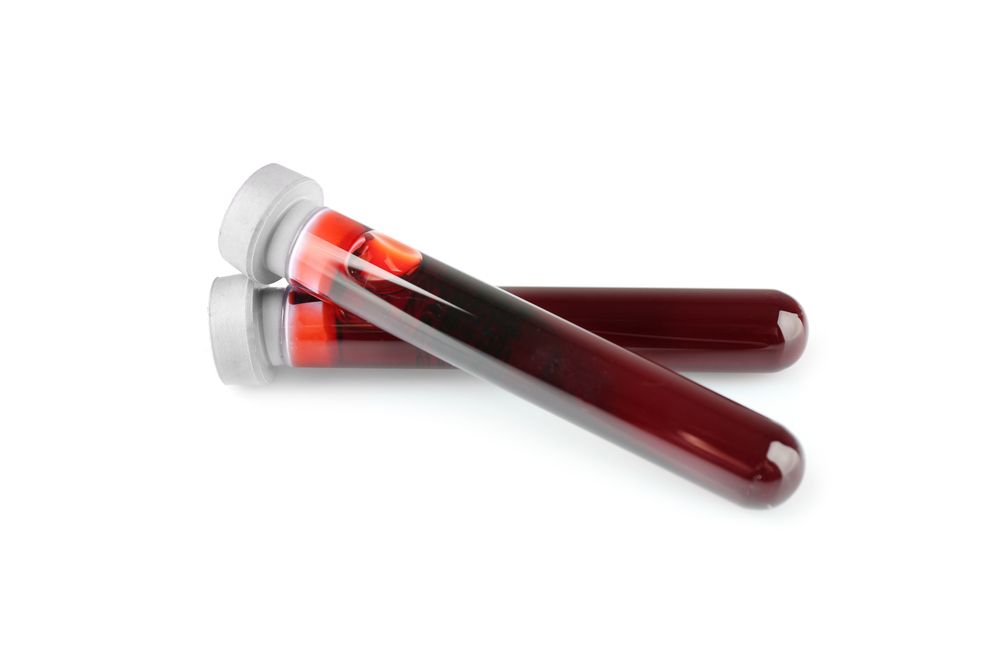Regular Blood Removal Eased CEP Symptoms, Case Report Shows
Written by |

A woman with the rarest type of porphyria, called congenital erythropoietic porphyria or CEP, was successfully treated by regular blood removal — a procedure called phlebotomy — which lowered her blood iron levels, reduced urinary porphyrins, and eliminated sun-sensitive skin blisters, a case study showed.
Based on these successes, the researchers have suggested that phlebotomy may be a safe and effective option for treating patients in whom the disease has had a minor effect on blood-related parameters. Of note, the investigators also said this form of treatment was a convenient one.
The study, “Identification of novel UROS mutations in a patient with congenital erythropoietic porphyria and efficient treatment by phlebotomy,” was published in the journal Molecular Genetics and Metabolism Reports.
CEP is a rare inherited disorder caused by defects in the uroporphyrinogen-III-synthase (UROS) enzyme, which is required for the production of heme — a molecule essential for transporting oxygen in red blood cells.
The disease is characterized by the toxic buildup of heme precursors, called porphyrins. That buildup leads to severe skin sensitivity to sunlight and chronic hemolytic anemia, or the destruction of red blood cells.
The excessive activity of ALAS2, a gene that encodes another enzyme involved in heme production, can worsen CEP symptoms due to the excessive production and buildup of porphyrins. Since an iron-dependent mechanism regulates the production of ALAS2, it has been proposed that reducing iron levels may decrease porphyrin production and lessen CEP symptoms.
One strategy is to use iron chelators, which are medicines approved to remove excess iron from the bloodstream. However, the long-term use of these medications has been associated with adverse events, or side effects, involving several organs, such as the liver and kidneys, limiting their usability.
Phlebotomy is a procedure in which blood is removed from the body by the same methods normally used in standard blood tests. Previous case reports have shown regular phlebotomy therapy successfully reduced porphyrin levels and symptoms in CEP patients, suggesting it may be a useful strategy to manage the disease.
Now, researchers at the University of Bordeaux, in France, and their colleagues reported another such case involving a 26-year-old woman with CEP whose clinical status improved after having regular phlebotomy treatments.
The Caucasian woman was diagnosed with CEP at age 8 and had multiple skin blisters on sun-exposed areas of her hands, feet, and face. She also had excessive hair growth, a condition known as hypertrichosis, on the same sun-exposed regions.
Consistent with a CEP diagnosis, the patient had elevated urinary porphyrins and reduced UROS enzyme activity in her red blood cells.
Notably, the woman has two brothers, but neither has the disease.
Genetic analysis revealed she had two previously unreported variants (mutations), one inherited from each parent, in the UROS gene that contains instructions for making the UROS enzyme.
Tests showed these mutations lowered the activity of the UROS enzyme to 0.01% and 0.3% of its typical values, depending on the variant.
Further analysis revealed UROS stability was not impacted by one of these mutations, which belonged to a category of genetic alterations that often compromise enzyme stability. That finding ruled out the use of chaperone therapies, which work by stabilizing enzymes and other proteins, as a potential treatment.
She showed no signs of anemia, or red blood cell deficiency, or chronic hemolysis, which is red blood cell destruction; her initial urinary porphyrin levels were considered moderate.
A conservative treatment, basically consisting of sun avoidance, failed to alleviate the woman’s symptoms.
That led physicians to initiate a course of regular phlebotomy treatments.
Phlebotomy therapy began with the removal of 300 mL of blood three times at weekly intervals, followed by 350 to 400 mL every two months. Blood tests showed progressive iron depletion. At this point, the team adjusted bleeding rates to maintain ferritin — the blood protein that stores iron — at consistently low levels of less than 10 mcg/L.
By the end of the 26-month (just over two-year) treatment course, the patient’s urinary porphyrin levels had dropped by 93% relative to her initial levels before starting phlebotomy therapy.
Meanwhile, her hemoglobin levels remained stable over the 26 months of therapy with her red blood cells gradually getting smaller in size, reflecting iron depletion, the researchers said.
With treatment, her photosensitive skin blisters disappeared, her reddish urine color due to CEP declined, and her overall quality of life improved.
In this patient, “iron depletion therapy based on [regular] phlebotomies efficiently reduced porphyrin accumulation and significantly improved the clinical outcome,” the investigators wrote.
“We propose that phlebotomy is a convenient treatment that can be implemented in patients with minor hematological [blood] involvement and could become an efficient and well-tolerated therapeutic approach in CEP,” they concluded.





